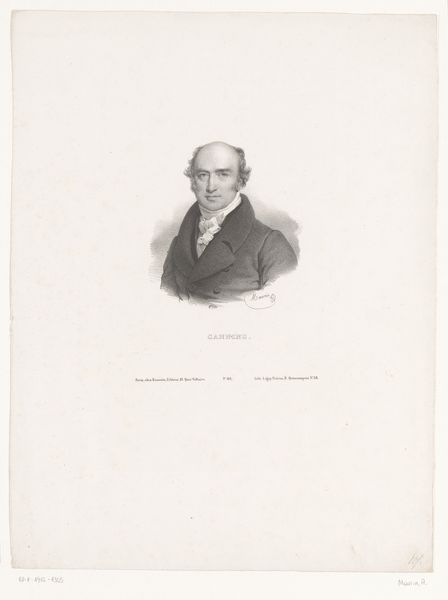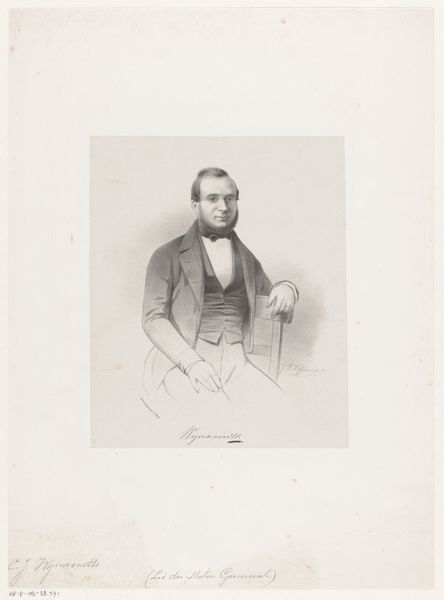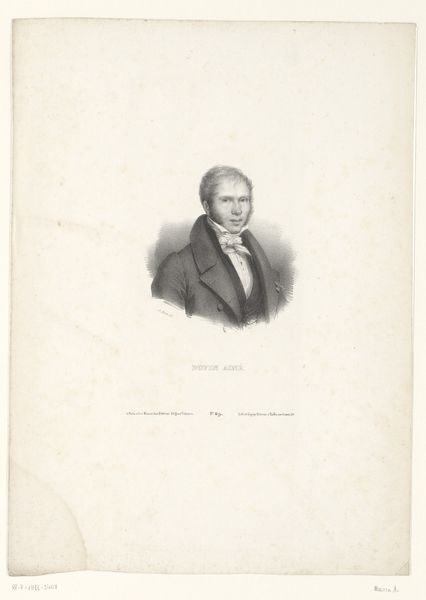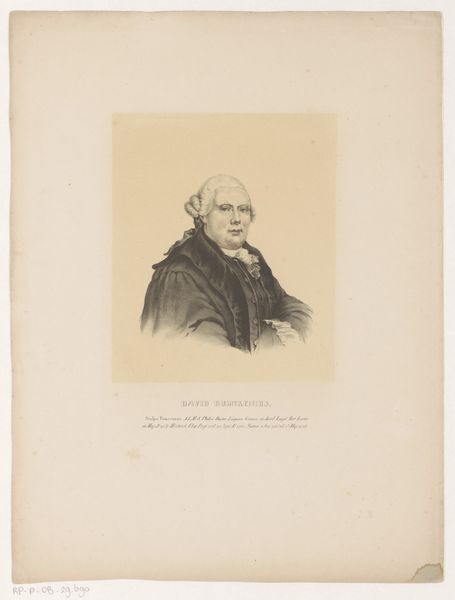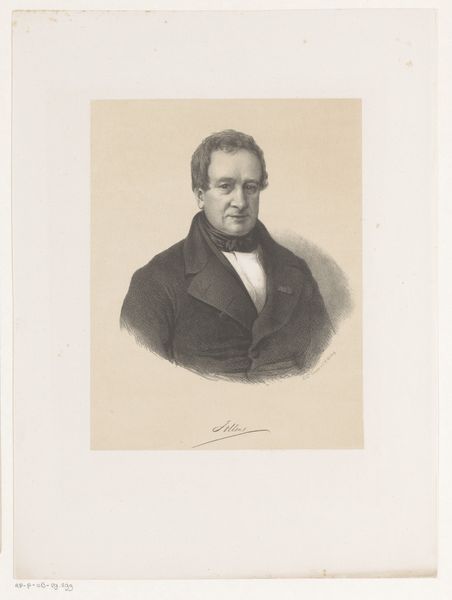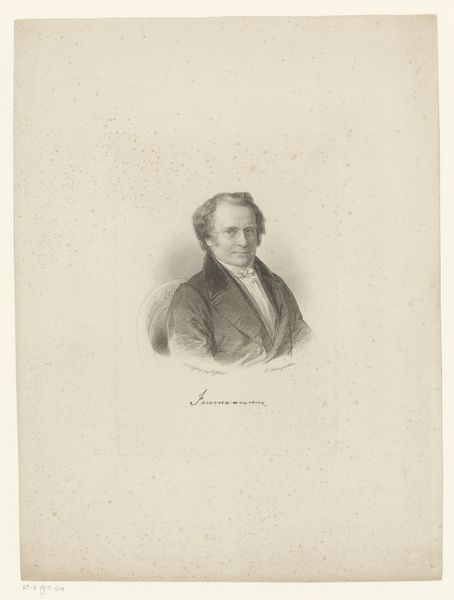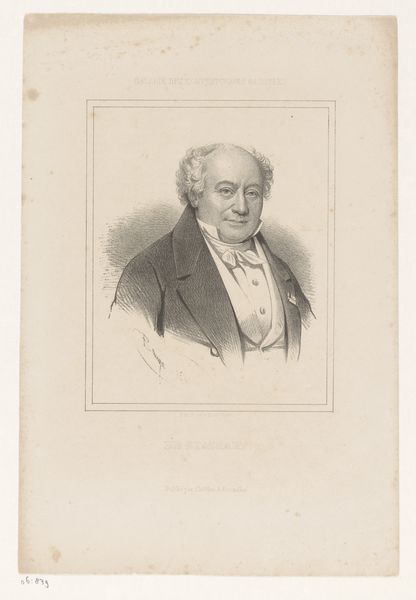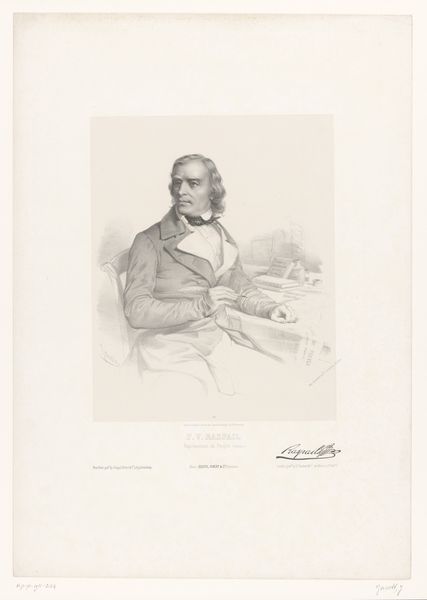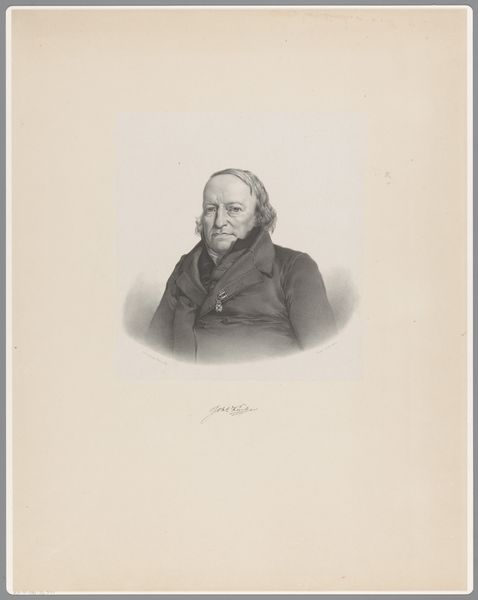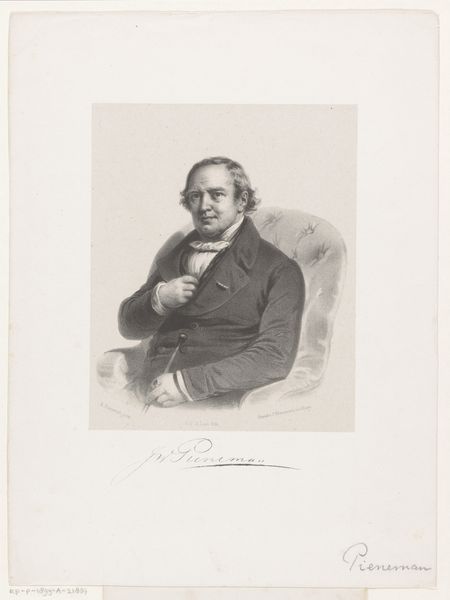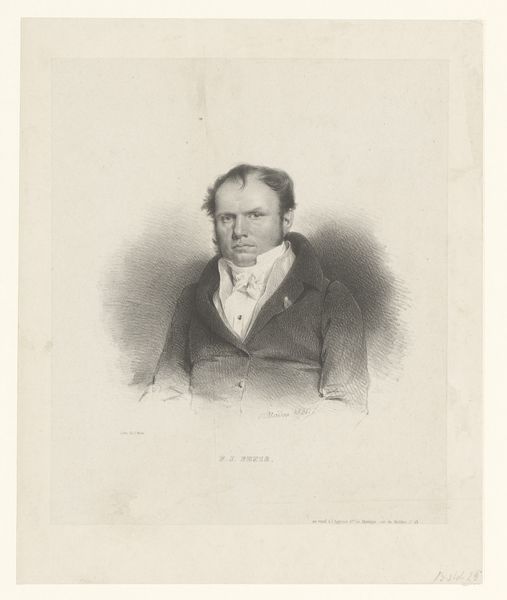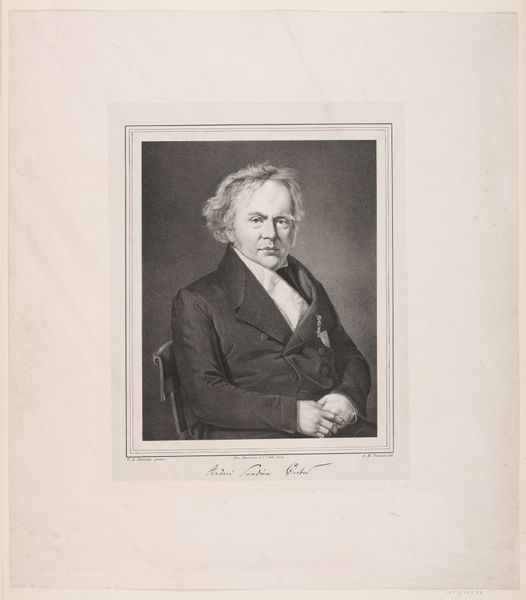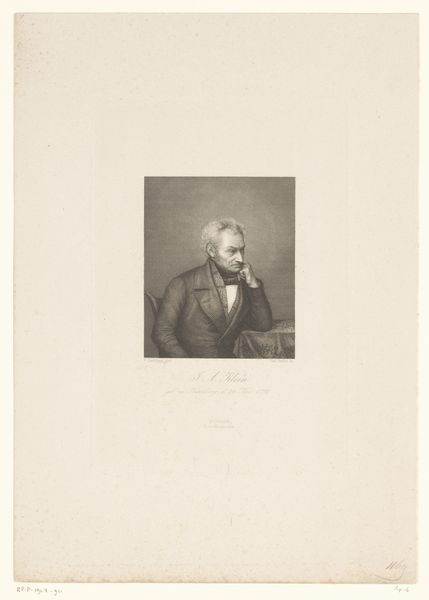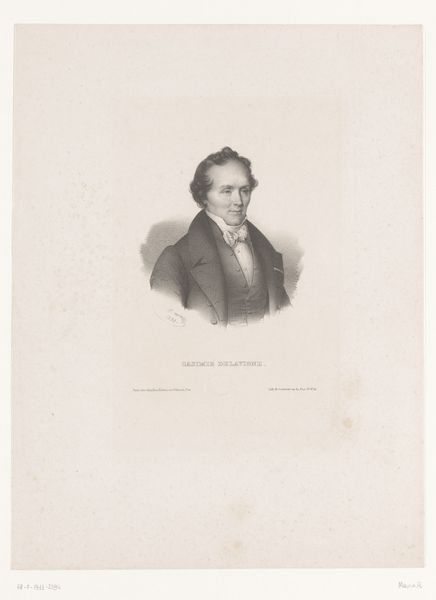
drawing, pencil, graphite
#
portrait
#
drawing
#
neoclacissism
#
pencil
#
graphite
#
history-painting
Dimensions: height 540 mm, width 364 mm
Copyright: Rijks Museum: Open Domain
Editor: This is a portrait of Johannes Clarisse, rendered between 1809 and 1871 by Leendert Springer. It’s a drawing, graphite and pencil on paper, fitting the Neoclassical style. I am struck by how this medium softens the gaze; what do you see in this work? Curator: This portrait of Johannes Clarisse offers a glimpse into the nexus of religion, politics, and education in the Netherlands during a period of significant societal transition. Clarisse was a professor of theology, but also an influential figure within the Leiden academic community and in broader Dutch intellectual circles. What does this portrait tell us about how power was visualized and legitimized in that context? Editor: He appears respectable, with the way he dresses, but I don't know whether that makes him powerful. Curator: Absolutely, clothing played a crucial role, signalling status, education, and social standing, but let's consider this. Neoclassicism itself, in its revival of classical forms and ideals, was frequently employed by those seeking to establish or reinforce their authority, aligning themselves with a historical legacy of perceived order and reason. Editor: Ah, I see what you mean, in that way Neoclassicism became almost like propaganda? Curator: It was a conscious deployment of visual language! Think about how Springer's choice of the Neoclassical style might underscore Clarisse’s commitment to Enlightenment ideals. Can we view the soft, shaded rendering in pencil and graphite as perhaps humanizing a figure often associated with religious doctrine? Editor: Interesting... so it's both a personal portrait, and a commentary on the subject's public persona. Thank you for sharing this viewpoint. Curator: Of course, it’s through these intersectional lenses that we can begin to unpack the deeper meanings embedded within artworks, appreciating not only their aesthetic qualities, but also their profound social and political implications.
Comments
No comments
Be the first to comment and join the conversation on the ultimate creative platform.
